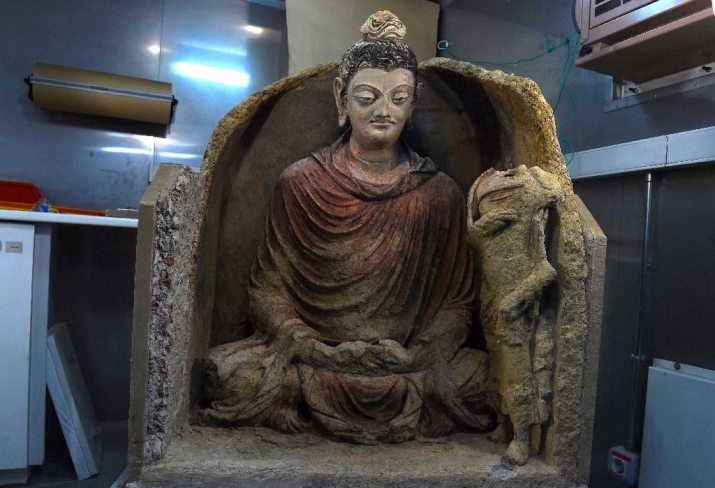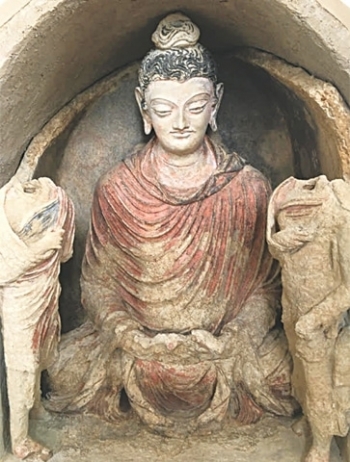“The statue was almost whole when it was discovered, with its head present, which is rare,” said Italian restoration expert Ermano Carbonara. “It was placed in the centre of a niche, which itself had been decorated with painted flowers, in the heart of a great centre of [an area used for] prayer. It was better to remove it from the site to protect it.” (Channel NewsAsia)
However, because the statue was crafted from clay sourced from the Mes Aynak River, it is particularly fragile and vulnerable to moisture. “A night of rain could destroy it,” said Carbonara. He noted that the remarkable quality of the craftsmanship—the facial details, the black curls of hair on its head, and the figure’s pink cheeks and blue eyes were testament to “truly sophisticated technique” of its creators. (Channel NewsAsia)
One of the world’s most significant archeological excavations, the remains of the ancient settlement of Mes Aynak lie in a barren region of Afghanistan’s Logar Province, some 40 kilometers from Kabul. Once a city on the fabled Silk Road network of trade routes that facilitated the exchange of cultures and spiritual traditions across the ancient world. This remarkable historical treasure trove, which French archaeologist Philippe Marquis has described as “probably one of the most important points along the Silk Road,” includes more than 400 Buddhist statues, stupas, and a 40-hectare monastery complex, along with forts, and a citadel spread over 19 separate archaeological sites. (The Sydney Morning Herald)
















